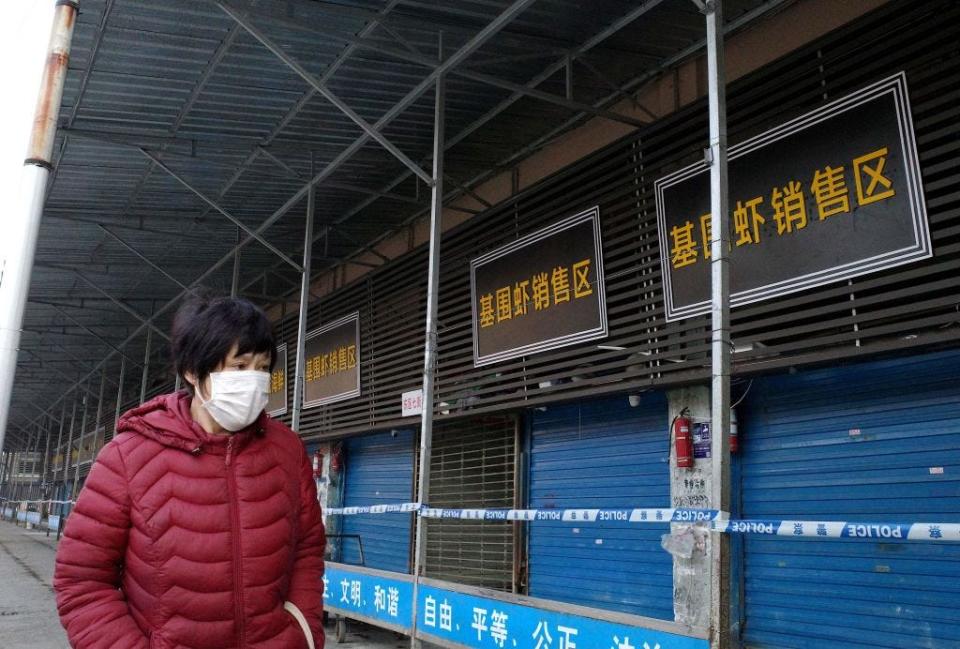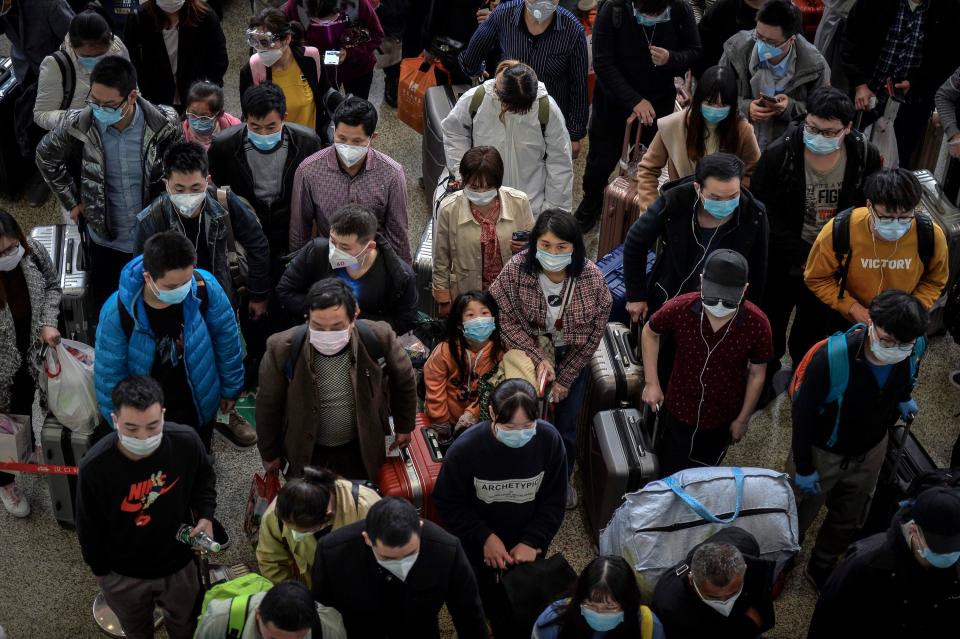The Chinese CDC now says the coronavirus didn't jump to people at the Wuhan wet market — instead, it was the site of a super-spreader event

Experts think the new coronavirus originated in bats, then jumped to humans via an intermediary animal species.
Initially, authorities in Wuhan, China — where the first cases were reported— thought that jump happened at a local wet market.
Now, the Chinese CDC has ruled out the market as a possible origin site for the outbreak. Instead, it may have been the site of an early super-spreader event.
Animals sold at the market were not infected with the virus, tests showed, which suggests that they couldn't have infected shoppers.
Related Video: Why Some Viruses Jump From Animals to People and Some Don't
Experts still don't know where the new coronavirus came from.
Genetic evidence has all but confirmed that the virus originated in Chinese bats before it jumped to humans via an intermediary animal host. But where and how that spillover first happened is still up for debate.
Initially, authorities in Wuhan, China, reported that the first cases of the virus emerged at the local Huanan Seafood Wholesale Market. But following an investigation of the animals sold there, the Chinese Centers for Disease Control and Prevention (CDC) said this week that it has ruled the site out as the origin point of the outbreak.
According to the Wall Street Journal, Gao Fu, the director of the Chinese CDC, told Chinese state media: "It now turns out that the market is one of the victims."
Samples collected from animals at the market came back negative for the new coronavirus, suggesting that they couldn't have infected shoppers.
The cases linked to the wet market weren't the first in China

NOEL CELIS/AFP via Getty Images
Wuhan authorities first informed the World Health Organization (WHO) about the unknown, pneumonialike illness that would later be identified as the new coronavirus on December 31.
A majority of the initial 41 cases were linked to the wet market, which was shut down on January 1. Given that the SARS outbreak in 2002 and 2003 started at a similar venue in Guangdong, China, the wet market seemed like a logical origin. (The SARS coronavirus jumped from bats to civet cats to people.)
But none of the animals at the market tested positive for the virus, Colin Carlson, a zoologist at Georgetown University told Live Science. If they were never infected, they couldn't have been the intermediary host that facilitated the spillover.
A growing body of research supports the Chinese CDC's conclusion that the outbreak's origins were unrelated to the market. The virus seems to have been circulating in Wuhan before those 41 cases were reported: Research published in January showed that the first person to test positive for the coronavirus was likely exposed to it on December 1, then showed symptoms on December 8. The researchers behind the study also found that 13 of the 41 original cases showed no link to the wet market.
Similarly, an April study suggested that the coronavirus had already established itself and begun spreading in the Wuhan community by early January.

HECTOR RETAMAL/AFP via Getty Images
The identity of "patient zero" hasn't been confirmed, but it may have been a 55-year-old man from China's Hubei province who was infected on November 17, according to the South China Morning Post (SCMP), which reviewed government documents.
The wet market could have been the site of a super-spreader event
Carlson told Live Science that the Wuhan wet market may simply have been the a site of an early super-spreader event — an instance in which one sick person infects an atypically large number of others.
Other super-spreader events around the world have also created clusters of infections that cropped up almost overnight. In Daegu, South Korea, for example, one churchgoer infected at least 43 people.

Feature China/Barcroft Media via Getty Images
These instances don't necessarily involve a person who is more contagious than others or sheds more viral particles. Rather, the infected person has access to a greater number of people in spaces that facilitate infection. A market, in which shoppers interact with one another and vendors in close quarters, is one such risky place.
The coronavirus also probably did not leak from a lab
Lingering questions about the pandemic's origin have given rise to a range of unsubstantiated theories. One suggests the coronavirus may have accidentally leaked from a local laboratory, the Wuhan Institute of Virology (WIV), in which scientists were researching coronaviruses.

But both Chinese and US researchers said there's no evidence to support that theory. The high-security lab says it has no record of the novel coronavirus' genome, and it follows strict safety measures.
The director of the WIV, Wang Yanyi, told China Central Television last weekend that the new coronavirus is genetically different from any kind of live virus that has been studied at the institute. Prior to that, WIV virologist Shi Zhengli — who collects, samples, and studies coronaviruses in Chinese bats — told Scientific American that she cross-referenced the new coronavirus' genome with the genetic information of other bat coronaviruses her team had collected. They didn't find a match.
"That really took a load off my mind," Shi said in March, adding, "I had not slept a wink for days."

 Yahoo News
Yahoo News 
